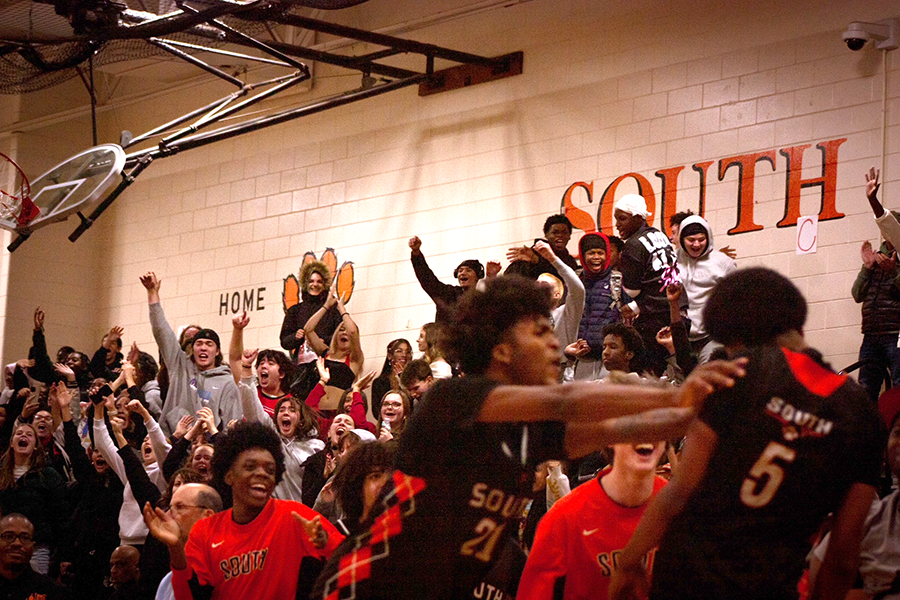In December, the school board proposed a measure that would lower the GPA requirements to play sports and participate in any other competition activities, such as debate, music, and robotics.
Currently students have to have a 2.0 in the previous quarter. The proposed measure would make it so that students could have a cumulative 2.0 GPA, or simply have made 0.1 growth in their GPA since the previous quarter. This means students could have GPAs much lower than 2.0, provided they were making progress.
The policies also aim to clear up inconsistencies with other schools and school districts, as well as make current policies more student-centered. The school board hopes that it will make it easier for students who face academic barriers to participate in extracurricular activities.
By making the emphasis on progress, as Minneapolis Public Schools board member Richard Mammen described, “It [would] acknowledge the need for continuous progress, and send the message to coaches and others who are involved in students’ lives that academic achievement and gains are important.”
South’s head football coach Lenny Sedlock supports the measure as well. “Bottom line, it’s not about football. It’s about the students, it’s about leadership, and it’s about the rest of their lives.”
Mammen and the school board believed that focusing on progress towards graduation, rather than simply a student’s grade at that point, would be more beneficial to students.
“[The new policies] don’t set a false premise that a 2.0 in the previous grade period is an indication of [students’] hopes or their abilities. It was to give more flexibility and make it more student focused rather than policy focused,” explained Mammen.
“I think it’s going to be a motivator for [students] to be successful, and help them graduate and go on to do well in college,” Sedlock affirmed.
In creating the measure, the school board hoped to recognize that extracurriculars are just as important and enriching as the rest of the school day. Mammen hopes that it would be “a means to recognize that athletics and chess club and other activities are definitely part of the fabric of life in any school.”
According to proponents of the measure, extracurriculars are tied to better attendance, grades, and a greater likelihood of graduation.
Mark Sanders, South’s athletic director, also supports the measure. “If more kids were involved in sports, it would be easier to ‘keep them off the streets,’ so to speak, and give them an opportunity, give them that ‘carrot,’” explained Sanders. Sanders explained sports and other extracurriculars as a carrot, or a leading point, to attend and do well in school.
Sedlock sees it that way, too. If the policies were passed, he said, “we might be able to help some more students. If a student isn’t able to play, they stop having a reason to come to school. Their grades go down, and one day you just don’t see them anymore.”
“Maybe [students who are ineligible for sports] drop out of school, and they don’t have a reason to continue their education,” agreed Sanders.
Another problem both Mammen and Sanders mentioned is the recruiting disadvantage. “We lose students to other school districts because they feel that they can’t play in our programs,” said Mammen. Many students leave the Minneapolis district to go districts where policies around grade requirements for sports are less stringent.
“It puts us more on a level playing field with what other schools in the region are doing, and with what the current MSHSL (Minnesota State High School League) policy is, and that policy is just being on track to graduate,” added Sanders. Many districts choose to simply follow the MSHSL policy, that a student only need to be on track to graduate to play sports, which helps them to recruit students as well as gain talented ones for their sports programs.
Junior Jaylin Bynum is a football player for South. Bynum struggled with keeping the grades he needed to play football. “I know a lot of players who have a lot of talent, but don’t have the grades.” These students either end up transferring to other districts or, as Bynum described, “They end up doing other things that bring them down. Negative things.”
This year, Bynum was not able to play for a period of the football season because of his grades. “It was hard. I went and sat in the locker room, just thought about it. Man, I let my team down. And it hurt,” he remembered.
“I couldn’t [play football] because I didn’t have a 2.0, and then I ended up getting that, and I’m fortunate for that,” Bynum added. While he sees the benefits the new policy could have on him and his team, he also appreciates having an incentive to get his grades back up.
“Now [players] are going to know that they don’t have to work as hard for that 2.0, they’ll think they can just skate [by] if they have a 1.0,” Bynum elaborated. “Having a 1.0 might work in high school, but when you go to college, they’re not going to accept that. And if you can’t keep up the work there, you’re not going to be able to play.”
Bynum thinks that having low grades in high school will create low expectations for college. “If a college scout sees you and likes how you play, and you were able to play, they still wouldn’t want you because of [a GPA less than 1.0],” Bynum explained. He believes that missing out on sports for a few weeks in high school is going to be hard, but getting better grades will help you get into and play sports in college.
Many opponents of the policies agree with Bynum. They are concerned that the measure would lower students’ standards, and are confident that kids can do better. Opponents view the current GPA standard as a policy to encourage them to do better.
The measure took many by surprise, and when the school board moved to vote on it, they faced a public backlash. The date the school board will vote on it is unknown, although Mammen estimates that it will be around March or April, but could be as late as June. The school board postponed the vote in order to hear more of the public’s opinion, and are currently more than welcome to any input from the public, especially students, on the measure.







